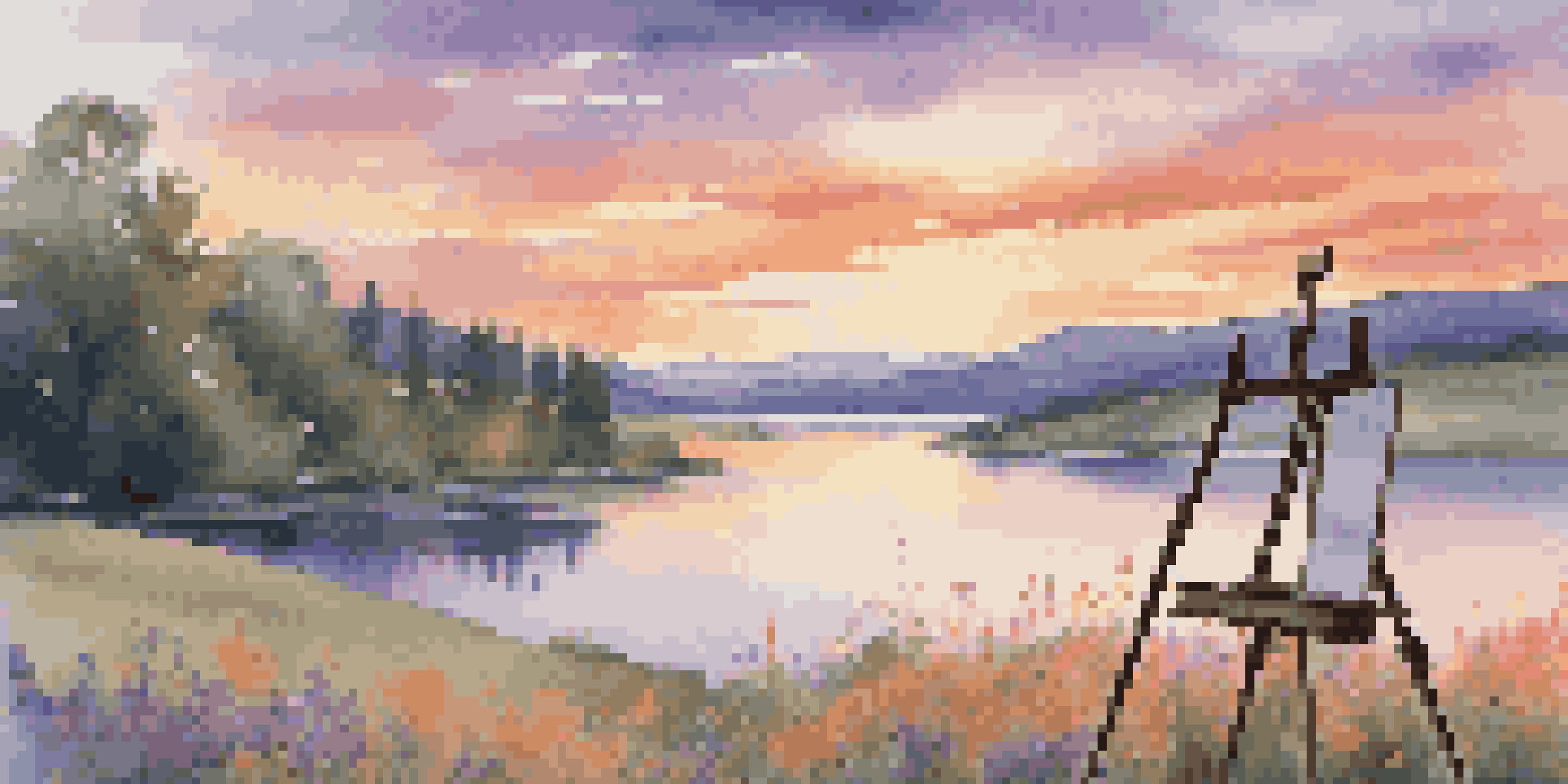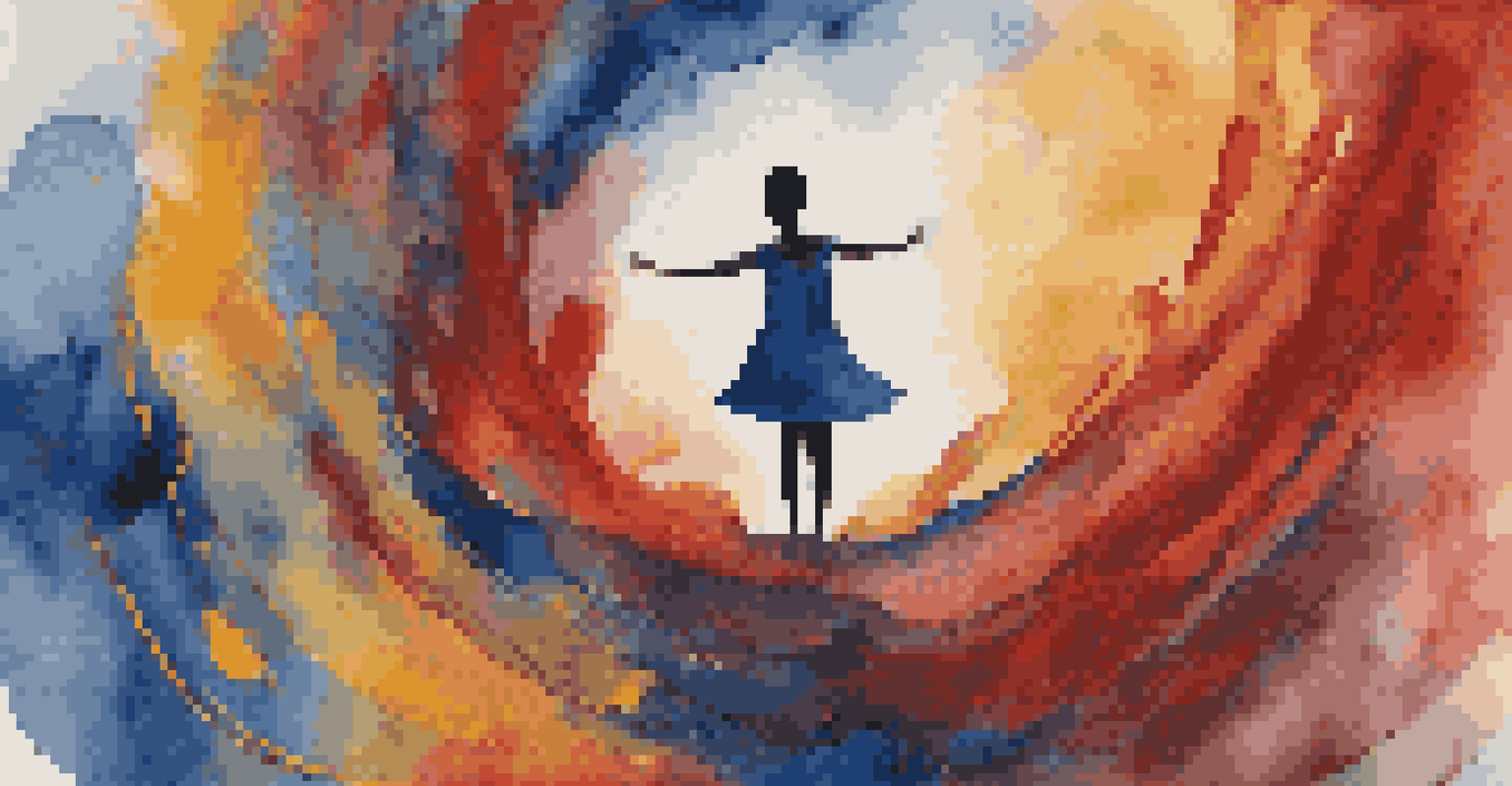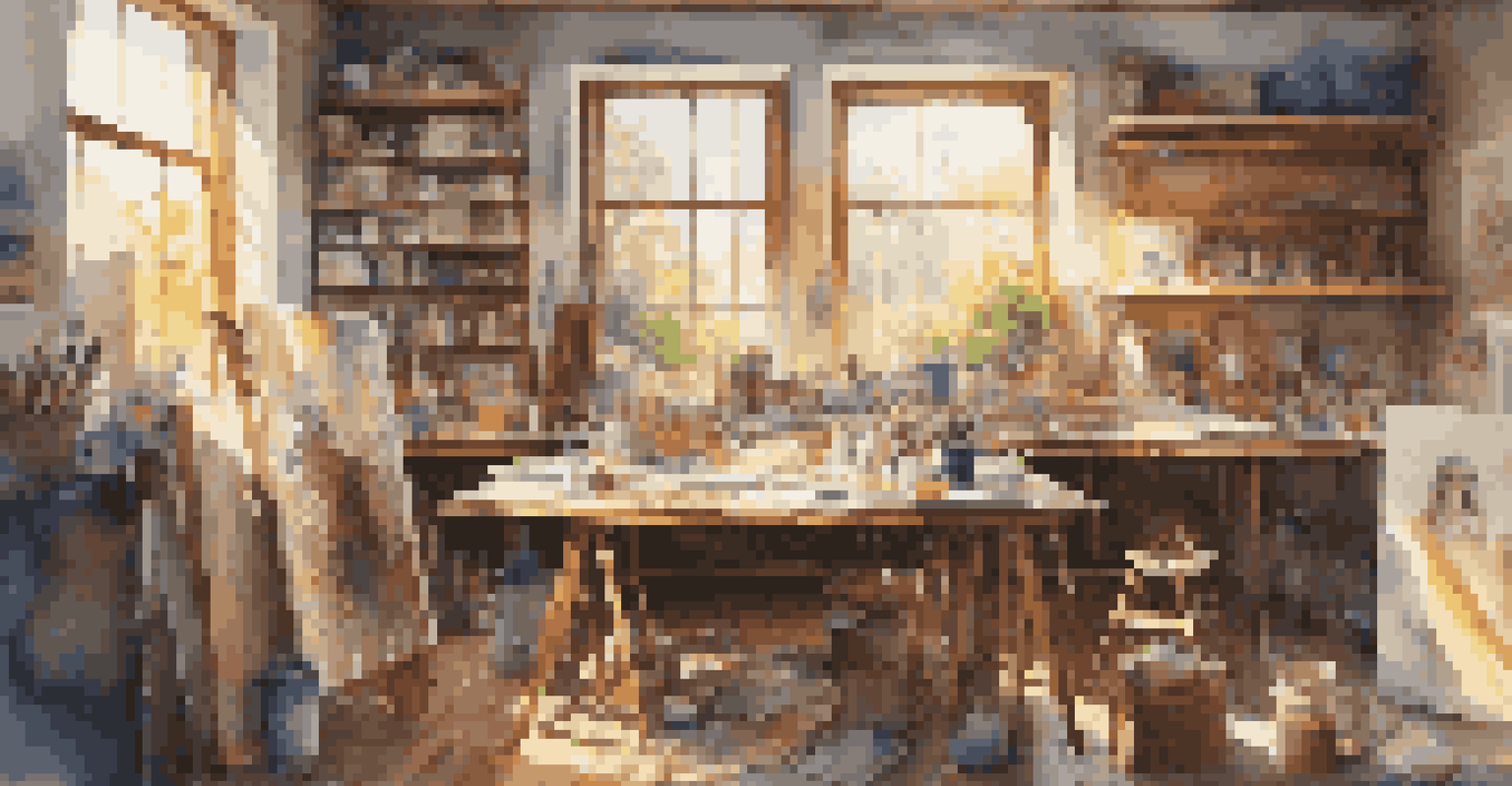The Influence of Personal Experience on Artistic Expression

Understanding Artistic Expression and Its Roots
Artistic expression is a reflection of an artist's inner world, shaped significantly by their personal experiences. These experiences serve as a canvas upon which emotions, thoughts, and memories are painted. Whether it's a joyful moment, a traumatic event, or a mundane day, each instance contributes to the artist's unique voice.
Art is the most beautiful of all lies.
For instance, a painter who has traveled extensively may incorporate vibrant colors and diverse themes inspired by different cultures. In contrast, a musician may draw on personal heartbreak to create haunting melodies that resonate with listeners. These elements transform mere art into a profound connection between the artist and their audience.
Ultimately, understanding how personal experiences inform artistic expression allows us to appreciate the layers of meaning behind a piece of art. It invites us to see not just the creation itself, but the journey and emotions that brought it to life.
The Role of Emotion in Artistic Creation
Emotion is a driving force behind much of artistic creation, often stemming from personal experiences. Artists frequently channel their feelings into their work, whether it's joy, sadness, anger, or nostalgia. This emotional authenticity can create a powerful resonance with audiences, making the art feel relatable and impactful.

Consider a poet who writes about loss after experiencing the death of a loved one. The raw emotion captured in their verses can evoke similar feelings in readers, creating a shared experience that transcends time and space. This connection highlights how personal pain or joy can lead to universal themes in art.
Art Reflects Personal Experiences
An artist's unique voice is shaped by their personal experiences, emotions, and memories, which are expressed through their work.
Hence, artists who embrace their emotions often produce work that feels genuine and profound. This authenticity not only enriches the artistic landscape but also fosters deeper connections with those who engage with that art.
Cultural Background and Its Impact on Art
An artist's cultural background plays a pivotal role in shaping their artistic expression. Cultural experiences inform perspectives, traditions, and values that find their way into art. This interplay creates a rich tapestry of influences that can enhance or alter an artist's style and themes.
Every artist dips his brush in his own soul, and paints his own nature into his pictures.
For example, an artist from a community with a strong storytelling tradition may incorporate narrative elements into their visual art. Similarly, a musician influenced by cultural rhythms might create a unique fusion genre that celebrates their heritage. These cultural elements help define an artist's identity and contribute to the diversity of artistic expression.
Recognizing the cultural influences in art not only broadens our understanding but also enriches the dialogue around the work. It encourages appreciation for the myriad ways personal and cultural experiences shape creativity.
Life Experiences: From Joy to Trauma in Art
Life experiences, both positive and negative, serve as catalysts for artistic expression. Joyful moments can inspire uplifting art, while traumas often lead to introspective and sometimes darker works. This duality highlights the complexity of human emotion and its reflection in art.
Take the example of an artist who experienced a significant life change, such as becoming a parent. Their art may shift to convey themes of love, vulnerability, and growth, exploring new dimensions of their identity. Conversely, an artist grappling with past trauma might express their journey toward healing through abstract forms or somber colors.
Cultural Influence Shapes Art
An artist's cultural background plays a crucial role in informing their artistic expression and the themes they explore.
Through these lenses, art becomes a vehicle for processing life experiences. It allows both the artist and the audience to navigate the spectrum of human emotion together, fostering empathy and understanding.
The Influence of Community and Relationships on Art
The relationships and communities surrounding an artist can deeply influence their work. Support from friends and family can encourage creativity, while interactions with other artists can inspire new ideas and techniques. This communal aspect often enriches the artist's perspective and expression.
For instance, artists involved in collaborative projects may find their style evolving as they blend influences with peers. Whether it's a writer forming a critique group or a musician joining a band, these relationships can open new creative avenues. The dialogue and exchange of ideas can lead to innovative expressions that might not have emerged in isolation.
In essence, community shapes not just the artist but also the art itself. By weaving in collective experiences and perspectives, artists create works that resonate on multiple levels, fostering a sense of belonging and shared experience.
Personal Reflection: The Artist's Journey
Personal reflection is an essential aspect of the artistic journey. Many artists spend time contemplating their experiences, beliefs, and emotions, which can lead to profound insights. This introspection often results in art that is not only personal but also universal in its themes.
For instance, an artist might reflect on their childhood experiences of belonging and isolation, eventually creating a series that explores identity and community. By processing these thoughts through their art, they invite viewers to engage with their own reflections and interpretations, creating a shared space for dialogue.
Community Enriches Artistic Creation
The relationships and communities surrounding an artist profoundly influence their creativity and the evolution of their work.
Thus, personal reflection allows artists to distill their experiences into meaningfully crafted works. It transforms individual narratives into collective conversations, enriching the artistic landscape.
The Evolution of Artistic Expression Over Time
Artistic expression is not static; it evolves as the artist's life experiences accumulate. As artists grow and change, so too does their work, often reflecting new insights or shifts in perspective. This evolution can lead to exciting developments in style, medium, or subject matter.
For example, consider an artist who initially focused on abstract landscapes but later turns to portraiture after a profound personal experience. This shift can reveal deeper layers of their emotional journey and invite audiences to witness their transformation. Such changes highlight the dynamic nature of creativity and its responsiveness to life’s events.

Ultimately, the evolution of artistic expression underscores the importance of personal experiences in shaping an artist's trajectory. It reminds us that art is a living, breathing entity that reflects the complexities of life and creativity.